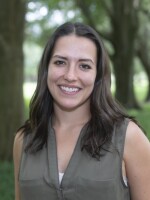Noah Meyers expected to graduate this fall with a bachelor's degree and $20,000 in debt. He's a senior studying anthropology at the University of South Florida.
"Now, I'm expecting to graduate with zero in debt," Meyers said. "And, you know — nothing feels nicer than that."
On Aug. 24, the Biden administration promised to cancel thousands of dollars in student loan debt for up to 43 million borrowers.

A much-anticipated decision after months of postponing the deadline to restart student loan repayments, President Biden announced a three-pronged plan to address student debt relief:
- Targeted debt relief for middle- and low-income borrowers. Individuals who earn less than $125,000 are eligible for $10,000 in debt relief. For borrowers who are also Pell Grant recipients, loan forgiveness could stretch to $20,000. Current students and dependents are eligible for debt relief.
- Changes to repayment plans and loan forgiveness programs.
The Department of Education may cap monthly payments for undergraduate loans at 5% of a borrower's income and ease requirements to enroll in the Public Service Loan Forgiveness (PSLF) program. - Efforts to limit barriers to entry and reduce the cost of college. The Pell Grant program, which awards need-based financial aid to undergraduates, received a historic $2,175 increase for the upcoming 2023-2024 school year.
The final postponement for student loan repayments is set for Dec. 31, 2022. For borrowers whose income data is already available to the Department of Education, debt relief may be automatic. Others should expect to apply when a portal is published online, according to a White House press release.
Google Trends show search interest in Florida spiked for terms "student loans" and "Pell Grant," following the student debt relief announcement in August.
Federal data show that 2.6 million Floridians are paying back student loans. On average, Florida borrowers owe more than $38,000.
Meyers said the recent loan forgiveness announcement has changed his post-graduate plans.
"It makes my future clearer and definitely allows me to search for careers that aren't as high paying but may be more fulfilling," he wrote in a text message.
As a full-time student, Meyers covered most of his tuition and expenses by working multiple jobs — most recently delivering pizzas. He received merit- and need-based financial aid every semester, too. And still, he had to borrow about $20,000 across eight subsidized loans to cover the outstanding costs of school and living.
Another Tampa borrower, Laura Rodriguez, is wary the debt relief doesn't go far enough for most borrowers.
She is one among the roughly 20 million Americans who stands to have her full balance of student loan debt forgiven.
"The loan forgiveness takes away all of my student debt," she wrote in a text message. "It should take away ALL student debt."
Since graduating, she now works three part-time jobs — as a cashier, substitute teacher and a hostess — and splits rent four ways to make ends meet in Tampa.
She earned a bachelor's degree and around $7,000 in debt — a rarity that she credits to attending school in-state and receiving financial aid through Pell Grants and Florida Bright Futures.
Most of her classmates weren't so lucky, she said.
Gabriella Paul covers the stories of people living paycheck to paycheck in the greater Tampa Bay region for WUSF. She's also a Report for America corps member. Here’s how you can share your story with her.





